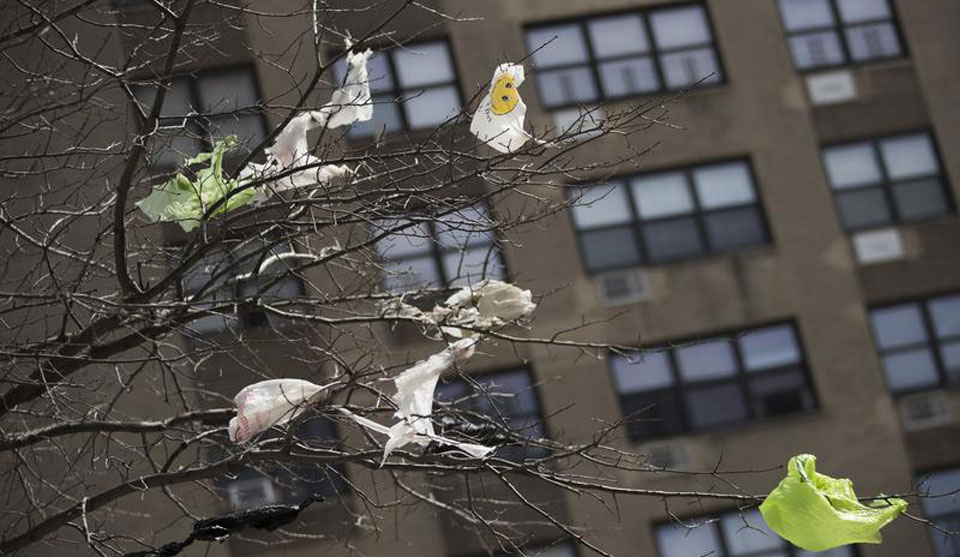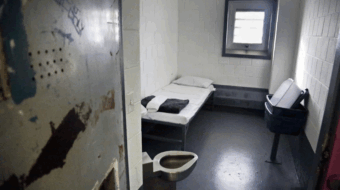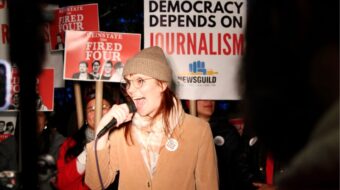
As New York state grapples with a plastic pollution crisis, legislators are taking aim at the problem with a new spate of policy proposals.
Two bills introduced in the New York state assembly this month would place far-reaching requirements on plastic manufacturers, mandating that they pay for waste management and dramatically increase recycling rates, among other things.
One of the bills, branded by proponents as “the strongest packaging reduction bill in the nation,” would require plastic manufacturers to reduce their single-use packaging by at least 50 percent within 10 years, while also mandating that big polluters pay for the cost of plastic disposal and recycling. The other proposal would expand New York’s “Bottle Bill,” which allows consumers to get a few cents back if they return used bottles to a retailer or redemption center.
“This comprehensive legislation is commensurate with the severity of the plastic pollution problem,” Judith Enck, a former regional administrator for the Environmental Protection Agency and president of the advocacy group Beyond Plastics, said in a statement.
The single-use bill, Assembly Bill A10185, invokes a concept known as “extended producer responsibility,” or EPR. Many policies fall within the category of EPR, but the approach generally seeks to place the economic burden of waste management onto the companies that make plastic and use it in their products. Companies therefore should pay for all of the cleanup, disposal, recycling, and other handling costs associated with the stuff they produce after consumers throw it away.
In addition to the aim of reducing single-use packaging by half, the bill would require plastic producers to pay fees based on the amount of packaging material they sell and transition 90 percent of their remaining nonreusable packaging to be either recyclable, compostable, or made of post-consumer recycled content within 12 years of the bill’s implementation.
Other measures in the bill include a requirement that producers stop using chemicals such as per- and polyfluoroalkyl substances (PFAS), bisphenols, and halogenated flame retardants in their products. These chemicals have been linked to neurological, developmental, and metabolic problems, as well as an increased risk of cancer. At least 10 new substances would have to be added to the list of banned compounds every three years unless regulators were to determine that “there are not 10 chemicals that meet the definition of toxic substances.”
The EPR bill would not apply to all companies: Producers would be exempt if they make less than $2 million annually in gross revenue or those that make less than 1 ton of packaging material each year. It also wouldn’t apply to reusable packaging or packaging used for medical purposes.
Rachel Karasik, a policy associate at Duke University’s Oceans and Ecosystem Services programs, said the bill was notable for explicitly barring so-called “chemical recycling” — a process in which used plastic is melted down and theoretically incorporated into new products — from being counted toward mandatory recycling benchmarks. Environmental advocates have criticized the process as an “expensive and complicated way to burn fossil fuels,” since cost and technological barriers often lead companies to burn melted plastic as fuel rather than convert it into new products. Proposals in other states have been less clear on whether chemical recycling could count toward reduced plastic-use goals.
The second proposal, Assembly Bill A10184, would expand New York state’s bottle bill to include containers for non-carbonated beverages such as wine, juice, and tea, and double the current 5-cent deposit, allowing consumers to get 10 cents back for every bottle they return. The bill is based on the idea that consumers pay a deposit whenever they buy an eligible drink, and can then reclaim their deposit if they return the empty bottle.
Steve Englebright, the New York assemblymember who introduced the bills, said in a press conference earlier this month that he thinks the bills have a “good chance of passing,” although this would likely not happen until next year; the Assembly ends its current session on June 2.
Environmental advocates have cheered the proposed bills as an opportunity to incentivize companies to abandon unnecessary packaging. Brian Langloss, a senior field representative in New York for the nonprofit Oceana, said the EPR bill would align with the values of 88 percent of registered New York state voters, who say they support policies to reduce single-use plastics. “We’re not the only ones who are tired of seeing plastic in our waterways, in our trees,” he said, describing “snow-capped” trees covered in plastic bags and views of the Hudson River clogged with drifting plastic bottles.
According to Beyond Plastics, New York state produces nearly 7 million metric tons of plastic packaging waste every year, constituting roughly 40 percent of the state’s entire waste stream. This plastic is unlikely to be recycled. Instead, it ends up incinerated, landfilled, or polluted directly into the environment, where it leaches toxic chemicals into the soil and water.
Other states have also put forward proposals to get their plastic pollution under control, although Karasik said that few are as comprehensive as New York’s proposed legislation. In California, voters will soon consider a controversial ballot initiative that would mandate producers reduce single-use plastics 25 percent by 2030 — a rate that New York state would surpass within four years, should the packaging bill pass. Other pieces of legislation in Maine and Oregon require plastic producers to form and finance waste stewardship organizations, but they lack quantitative benchmarks for plastic reduction. At the federal level, the proposed Break Free From Plastic Pollution Act seeks to create a national EPR program that would force producers to pay for long-term packaging pollution, but it too excludes numerical targets for reducing the production of plastic.
Langloss expressed optimism that the New York state bills would pass and that they would serve as an example for other jurisdictions across the country. The introduction of the EPR bill and its ambitious, quantitative packaging reduction goals, he said, is “already a small victory.”
This article was reposted from Grist.org.










